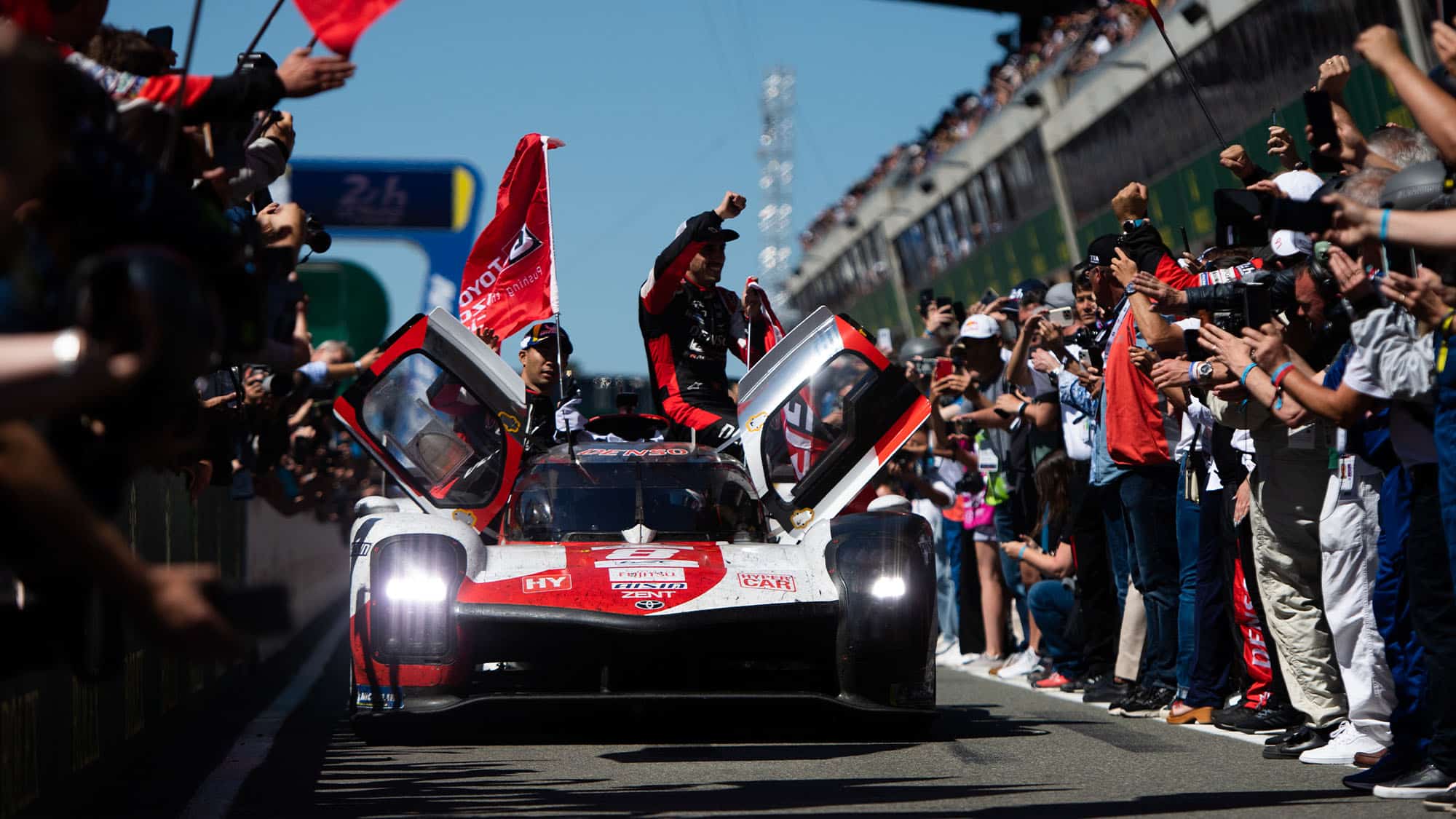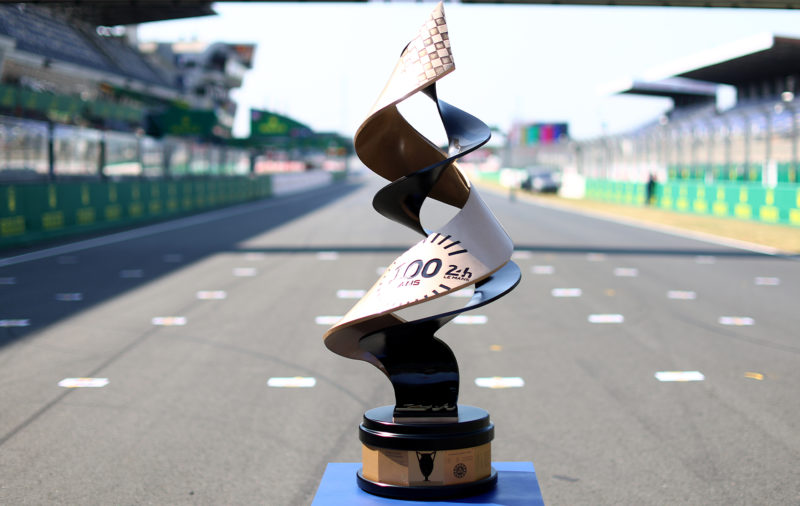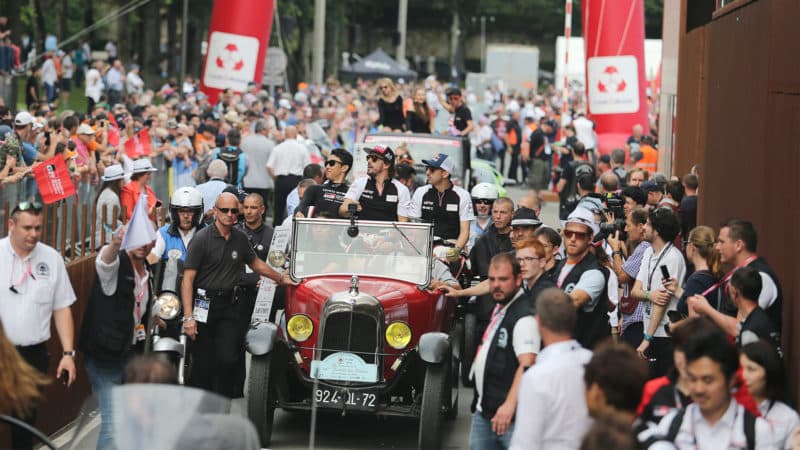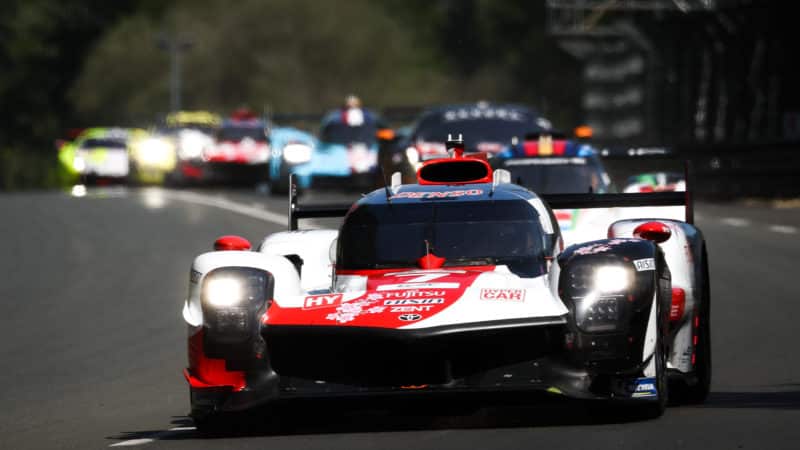Le Mans traditions explained: the trophy, the parade and the celebrity starter
The 24 Hours of Le Mans celebrates its 100th anniversary this weekend, meaning there are plenty of iconic traditions - including the driver's parade, the celebrity starter and the selection of the Grand Marshal

Getty Images
62 cars. 186 drivers. 24 hours. What some call the greatest spectacle in motor racing, Le Mans is set to complete its 100th running this weekend, with four categories of high-performance sports car battling wheel-to-wheel on the historic Circuit de la Sarthe.
While many eyes will be drawn to the very front of the field – where Toyota will hope to defend its Hypercar crown against the likes of Ferrari, Porsche and Cadillac – racing in the LMP2 and GTE categories will provide just as much entertainment – not to mention the 180mph Next Gen NASCAR entry that will also hitting the track.
But whilst the on-track action will be wildly unpredictable, there are many traditions that continue to make Le Mans a true motor sport spectacle.
From the Centenary Trophy to the celebrity starter, here’s every Le Mans tradition explained.
What is the Centenary Trophy?

A prize fit for a century of racing at Le Mans
Getty Images
The 24 Hours of Le Mans will celebrate its 100th anniversary this weekend, so it’s fitting to have a trophy that matches the occasion.
Revealed at the Pebble Beach Concours d’Elegance last year, the Le Mans Centenary Trophy will act as the prize for the team that covers the greatest distance in 24 hours. Made of bronze and standing at more than 1.5m tall, the trophy has already been displayed in numerous locations around the world to promote the race.
In order to make sure that over-zealous celebrations with the trophy won’t result in a bitter end to the weekend, it must comply with several production standards – essentially making the trophy more rigid and, more importantly, champagne resistant!
Who starts the 24 Hours of Le Mans?

Brad Pitt ready to start the 24 Hours of Le Mans in 2016
Getty Images
Since 1949, Le Mans has granted individuals the opportunity to be the ‘honorary starter’ who will wave the French flag to get racing underway at the Circuit de la Sarthe.
NBA superstar Lebron James has been given the task in 2023, joining the likes of Rafael Nadal, Brad Pitt, Steve McQueen and Henry Ford – all of which waved the flag in years gone by.
“There’s nothing like seeing and experiencing sports at their highest level,” said James in a statement. “I look forward to kicking off this iconic race and watching its world-class drivers compete on Le Mans’ global stage.”
Who is the Grand Marshal?

Kristensen is Le Mans most successful driver
Getty Images
The Grand Marshal is another honorary role, usually given to former legends of Le Mans, and this year is no different.
Tom Kristensen, ‘Mr Le Mans’ himself, will guide the field of 62 cars through the formation lap of the Centenary race, before peeling off into the pits.
The Danish driver captured his first of nine race wins at Le Mans in 1997 with Porsche – catapulting him to further success with Audi (2000, 2001, 2002, 2004, 2005, 2008, 2013) and Bentley (2003).
Do drivers run to their cars at Le Mans?

In no hurry: Ickx saunters across the track to his car in an image that wouldn’t be out of place in Hollywood. The traditional running start was dropped a year later
Getty Images
Synonymous with the event’s early days, there was once a time competing drivers would line up on the pit straight directly opposite their car. As the flag dropped, each driver would then run over, start the engine, and roar away.
But as safety efforts improved in the 1960s, the running start became an increasing risk – drivers choosing to remain unbuckled in the cockpit in order to save time. This ultimately resulted in the death of John Woolfe in 1969, who was thrown from his Porsche 917 in a first lap incident.
Famously, racing legend Jacky Ickx had been the loudest protesting voice against the starting procedure, calmly walking to his car while others ran – later winning the race.
From 1970, drivers were required to start the race inside their car – first on the side of the road and now with the familiar rolling start.
When and where is the Le Mans parade?

The parade provides a chance for fans to catch a glimpse of their racing heroes – such as Fernando Alonso who raced in 2016 with Toyota
Getty Images
Although the buzz surrounding the Centenary race has been felt for months, the true Le Mans celebrations reach fever pitch on Friday. The entire field of drivers for this years race will be paraded through the Le Mans town on Friday evening in front of 250,000 spectators and fans, along with some of Le Mans most iconic cars.
The intoxicating atmosphere sets the tone for the rest of the weekend, with live music and the deafening roar of racing engines providing a suitable backdrop.
How long can each driver race for?

Toyota has led the way so far, but finds itself under pressure after weight penalty
Toyota Gazoo Racing
The 186 drivers competing at this years Le Mans will be kept to a strict minimum and maximum driving time. Depending on the team, each driver will drive between 45 minutes to four hours at a time, but no single driver is allowed to drive for more than 14 hours total.
This is purely for the safety of the drivers but the lack of time limits in the past inspired some truly herculean efforts.
In 1952, Pierre Levegh raced for almost 23 of the 24 hours, aiming to become the first driver to win the French race in a French car. But with just over an hour to go until the checkered flag, his Talbot ground to a halt, leaving an exhausted Levegh stranded on the Mulsanne straight. British driver Edward Hall had taken it a miraculous step further in 1950, when he became the only driver in 100 years to drive for the full 24 hours – piloting his Bentley to eighth.
